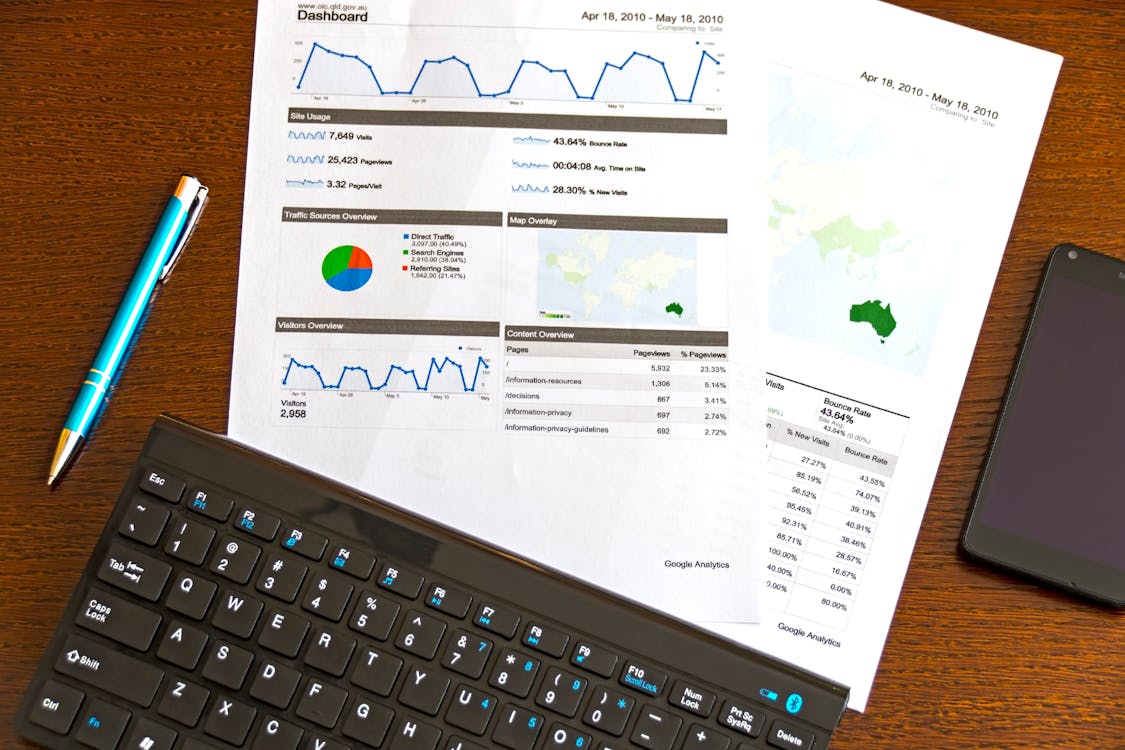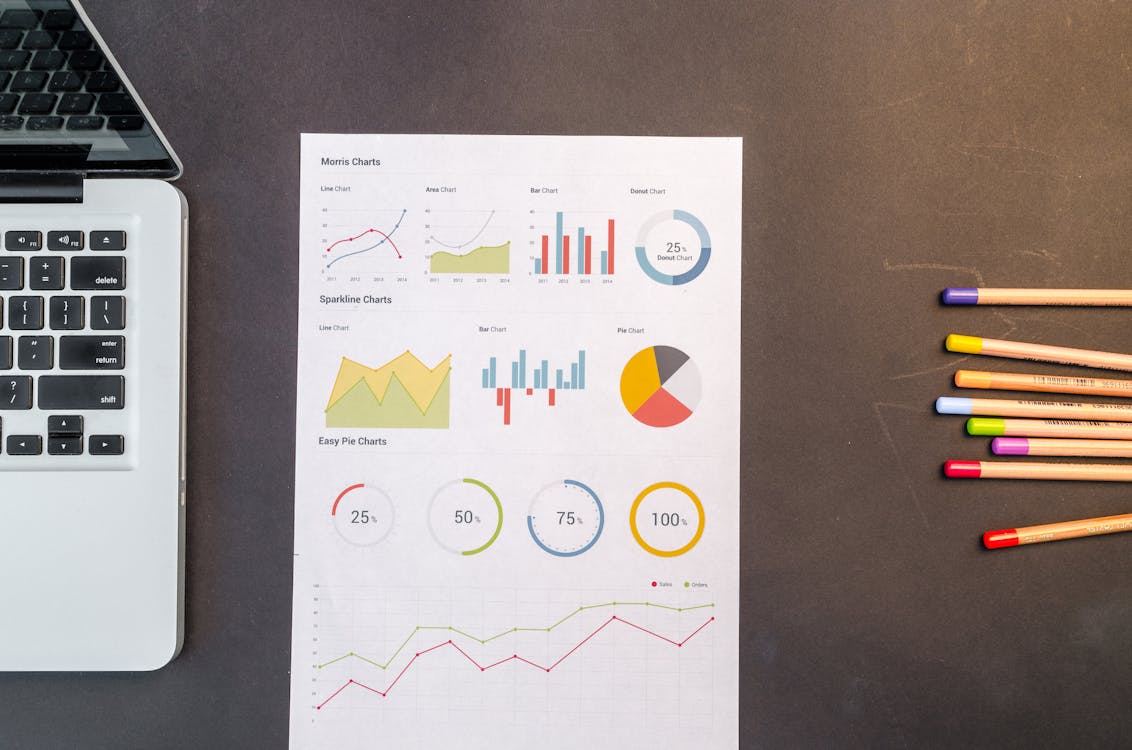Today’s topic is on insights personality test and workplace insight from data and analytics. Talent analytics have been around for a few years, and it is known to have value. However, few companies and organizations are still behind in embracing the concept of this groundbreaking opportunity for many human resource departments.
According to Deloitte, only about 4% of companies and organizations surveyed utilize predictive talent analytics for their offices. While 14% have that in place, and 60% of them are building plans to have them in place.
Talent analytics poses a lot of benefits. Research from the same Deloitte study has pointed to benefits such as improvement in revenues, improved engagement, and a dramatic increase in almost all business measures just by making better people decisions. So, what is data and talent analytics, exactly?
You might also like: Cognitive Intelligence: The Only Guide You Need
Insights Personality Test: What is Talent Analytics?
To put it simply, talent analytics provides insights into a company or organization’s overall workforce, whether it be in the recruiting realm with insights personality tests or even feedback from the already existing members.
What these insights are capable of pointing out could lead to a better understanding of what strengths they already have and what their weaknesses are, and how they can improve them.
Talent analytics will lead the company or organization to make better decisions. They can do this by utilizing predictions from different software that can track and collate each data, whether for a specific new application or to gauge if one particular employee is now ready for a promotion.
Components of Talent Analytics
Each data and talent analytics software will have its individual niche and features, but it will roughly be divided into three main categories.
Hiring Analytics
Recruiters will be able to have insights into their prospective hires through hiring analytics which will gauge and analyze their many skills, whether that might be knowledge through different cognitive measuring tests to knowing their soft skills through various insights personality tests.
It can also lessen bias in the hiring process since recruiting teams will be making a decision solely based on impartial data. Manual screening of resumes is not only a waste of time in the recruiter’s hand but also introduces bias, and hiring analytics can help prevent or even eliminate the bias from the hiring process.

Ongoing Feedback Analytics
Ongoing feedback analytics will help the human resource team read about the company or organization’s already existing employees. It will help them determine how well the workforce is performing, whether everyone has the suitable skill set, and if everyone is the talent needed for that particular role.
By reading the data, the human resource team will know how the workforce feels, so interventions like training or a seminar for the employee can be done if needed.
Optimizations Analytics
The last category of talent analytics is optimization analytics which combines the power of both data and predictions given by the hiring and ongoing feedback analytics.
Optimization analytics will ensure that all processes are running as smoothly and as robust as possible, from the recruiting efforts and ensuring that they are getting the best potential candidate for the job down to every internal process to ensure that their employees are happy and thriving in their work and responsibilities.
Types of Talent Data HR Should Collect
A data-driven recruitment and employee management approach will go a long way for the company or organization. It will do everything from increasing the quality of their hires to decreasing the cost of their hiring process. Other than that, it will also increase employee satisfaction and engagement.
So, what are the types of data HR should collect to come up with comprehensive talent analytics?
Sourcing Data
If a company or an organization is involved in volume recruiting, they need to follow and analyze multiple data sources to guide their hiring decisions. It will usually include a number of sources, from job boards to applicant tracking systems or ATS.
Job boards are a valuable source if you want the best insights to question concerning how the job adverts are performing. It will answer talent analytic questions like which job boards yield the best candidates or questions about how many people are accessing your job advert.
Social media is a great source to connect to the younger generation of applicants, but tracking data will ensure that your recruitment strategy in this realm is effective or not. This source will answer questions such as which channel or platform is excellent to get in touch with top candidates or questions about the cost per hire.
ATS stands for applicant tracking system, and this are the talent pool that each company saves, just in case. If the ATS is competent, it will automatically match who the suitable candidates are to the open seats in a company or an organization. Tracking data from this source will tell you what roles each past candidate has applied for or where each candidate is in the recruitment process.
For volume hiring, the easier it will be for each human resource office if they have access to CRMs or candidate relationship management data. CRMs will point to problems involving the dropout rates of each applicant, the quality of each hire based on their insights personality test, and how long each applicant is taking in each stage of the application process.
Employee Data
Data analytics is not just concerned with the recruitment process and won’t stop with that. If you want a comprehensive look into the inner workings of a company or an organization, it will be wise to check in by utilizing employee data.
Employee data will highlight what tweaks a recruitment team could do to better the entire process. Data from this source will allow the company or the organizations to have feasible plans to address employee attrition rate, employee engagement, employee satisfaction, etc.

Recruitment Analytics Data
The key to saving time and coming up with real-time data, especially on volume hiring for bigger companies and organizations, is utilizing recruitment analytics data. This platform collates all the data from the hiring process. It gives the recruiting team a complete picture of the hiring process so that they will be able to spot inefficiencies easily.
Operational insights will help the recruiting team understand how effective or ineffective the process is.
There are the hiring insights that will point to why a candidate just decided to drop off in the recruitment process so that they can improve if there is proven disorganization.
Personality insights are results of the insight personality test given as part of the recruitment process. This will show HR what types of candidates are applying to the open roles and how they compare against each other.
There are also scoring and matching insights that will assess each result for each job candidate and candidate experience insights to make you see how applicants perceive the application process.
The Many Uses of Data and Talent Analytics
There are many methods to adopt in analyzing different hiring and employee data to enhance each company or organization’s competitive advantage. These data and talent analytics will give the business fresh new management approaches without HR doing the guesswork.
So how can a company or an organization benefit from different data and talent insights?
Human Capital Facts
The first is human-capital facts which will give the company or the organization an idea of their business’ overall organizational health. Employers can ask their employees annually if they would recommend their company or organization; they can monitor and assess each employee’s engagement and satisfaction annually or even bi-annually.
Transparency with the end process and how and where the data will be used is integral for the success of this operation.
Analytical Human Resource
The analytical human resource will point to what departments, units, or any individuals need further attention to improve. This can easily be achievable by using an automated system in performance review data of each employee to figure out the points where they need improvement.
This way, data is harnessed to get to know candidates who have a high potential to move forward. At the same time, HR can help other employees who need improvement in a particular aspect of the job to meet the company or organization’s objectives.
Human Capital Investment Analysis
Data and talent analytics used in human capital investment analysis will point to which mitigative actions did have the most significant impact on the company or organization. A business can improve its retention rate by listening to feedback and figuring out where they need to improve to keep its employees happy and working for them.
When satisfaction scores dip, each business will need to institute improvements to get them back on track.
Workforce Forecasts
Workforce forecasts will ensure that the company or organizations know when to staff up and when to cut back in order to their business keep moving, especially in unknown circumstances. Data analyzed to develop accurate forecasts are succession planning, turnover rates, etc.
By knowing this, companies and organizations can identify deficiencies and excesses even before they happen.

Talent Value Model
The talent value model will explain why employees choose to leave or stay with a company or an organization.
Businesses can use these analytics to improve each employee experience through various mitigating actions such as personalized performance incentives or promotions or even matching the other recruitment offer to keep the promising candidate in their office.
Talent Supply Chain
The talent supply chain will answer the company or organizational questions about many talent-related demands. This is the most sophisticated use of data and talent analytics and will require high-quality data and more in-depth analysis.
The DELTA of How to Master Talent Analytics
Building the capability to use data and use it effectively and correctly will require a lot of the same processes fundamental in most business analyses. Here is how to master using data analytics summarized in the easy-to-follow acronym DELTA.
Data
The key to good data that the human resource department can collect and for the company to use in their processes is that it has to be sufficient to understand business and organizational trends, whether it is using the already existing metrics like employee data or augmenting new unconventional data like management observation.
Each data collated don’t need to be perfect; they just have to be appropriate so that it can be analyzed when it needs to.
Enterprise
In order for data analytics to be successful, data should not be confined to the four corners of the human office alone but integrated into every department and unit of a company or an organization. For example, there have been studies relating to employee satisfaction being the key to a higher company performance because of customer satisfaction.
Checking with your employee is not just something you do for morale but also a vital business prerogative.
Leadership
One of the vital aspects to the success of any data and talent analysis initiative is the dedication of each company and organization to commit to the approach. Since data and talent analytics are more geared toward human behavior, many might be hesitant and skeptical about leveraging this in their businesses.
Data and talent analytics are based on facts and data. The need for a company culture that is adaptive, open to experimentation and change is better not just for the HR group but also for the company.
Targets
A company or organization needs to have a means to an end or a target for its analytical activities. At a time, are they focused on retention or hiring? Or are they focused on individual employee assessments to figure out promotions and possible interventions?
Analysts
The perfect data and talent analytics will require the ideal experts in quantitative analysis, experts in psychometrics, and HR experts to create solutions to many problems. They will be able to interpret each data effectively, and this data can guide the company or business in making analytical and data-driven decisions.
Using Data In Hiring
One of the most matter-of-fact ways to make better hiring decisions is by harnessing data and talent analytics and using it to improve various hiring processes, starting at the cognitive and insights personality tests down to the interview and onboarding process.
Recruitment Effectiveness
Recruitment effectiveness gives a company or an organization a view of their recruitment process from insights personality test to the interview process. Companies and organizations can better have informed data to guide their decisions with data and talent analytics by knowing if there are discrepancies in the process.
It can point to solutions for quality of hire, cost per hire, etc.

Job Competencies
One important use of talent analytics is to know the job competencies needed to fill a specific position. Aspects such as job adaptability, and initiative, which are measured with insights personality tests and also the compensation, can be figured out by assessing incumbents and looking at supervisors.
The Value of Structured Assessments
Assessments can be cognitive, insights, personality tests, and even a structured interview. Many data analytics have pointed to the importance of structured tests like these.
It lessens bias but also allows the recruiters to compare each candidate so that they are more likely to make better hiring choices. A more casual process can reduce positive candidate experience and result in the recruiter missing out on the best hires.
Utilizing the Right Assessments
Other than a cognitive exam or a detailed insights personality test, one way to make your hiring process better is by utilizing the data-driven benefits of different assessments to land the best hires.
Hiring is not just focused on the smartest anymore. Recruiters need to assess various factors such as culture fit and leadership potential which can be gauged with insights personality tests.
Since talent insights are significant to human behavior, it will be able to make data-driven assessments for each candidate.
Using Data for Workforce Health
Another essential thing to consider in using data and talent insights is that it gives you a view or an idea of the health of your workforce.

Workforce Resilience
Ensuring that the workforce is resilient has been proven by the pandemic. Still, it is more critical now than ever since data analytics have shown the cracks that each company and organization need to tackle to keep their business and take care of each of their workers.
Many HR professionals can analyze workplace sustainability by leveraging metrics and coming up with solutions, whether that is continuous training sessions or giving their workers the flexibility to work at both the office and their homes for this fixed number of days to counter retention.
Continuous Feedback and Reskilling Efforts
To address problems such as skills gaps and to reskill the workforce, tracking real-time candidate performance in the talent data is needed. Other than data concerning candidate performance, continuous feedback is also advisable.
If the insights personality test is vital for potential hires, feedback is what it is for already existing employees. Management will be able to determine positive workforce realignment if it is needed. This way, each candidate can be their best in their work now that it aligns with their skills.
Indicators of Workforce
A surefire way to look at how the workforce is performing is by looking at the data presented in many gauges of employee engagement. This can be from individual employee feedback or department-wide reviews that allow the company or organization to understand their employees and the actions they need to ensure that they are satisfied and thriving.
This will strengthen the company culture and combat retention so that HR can focus on other facets of their work.
Photos credit PEXELS
